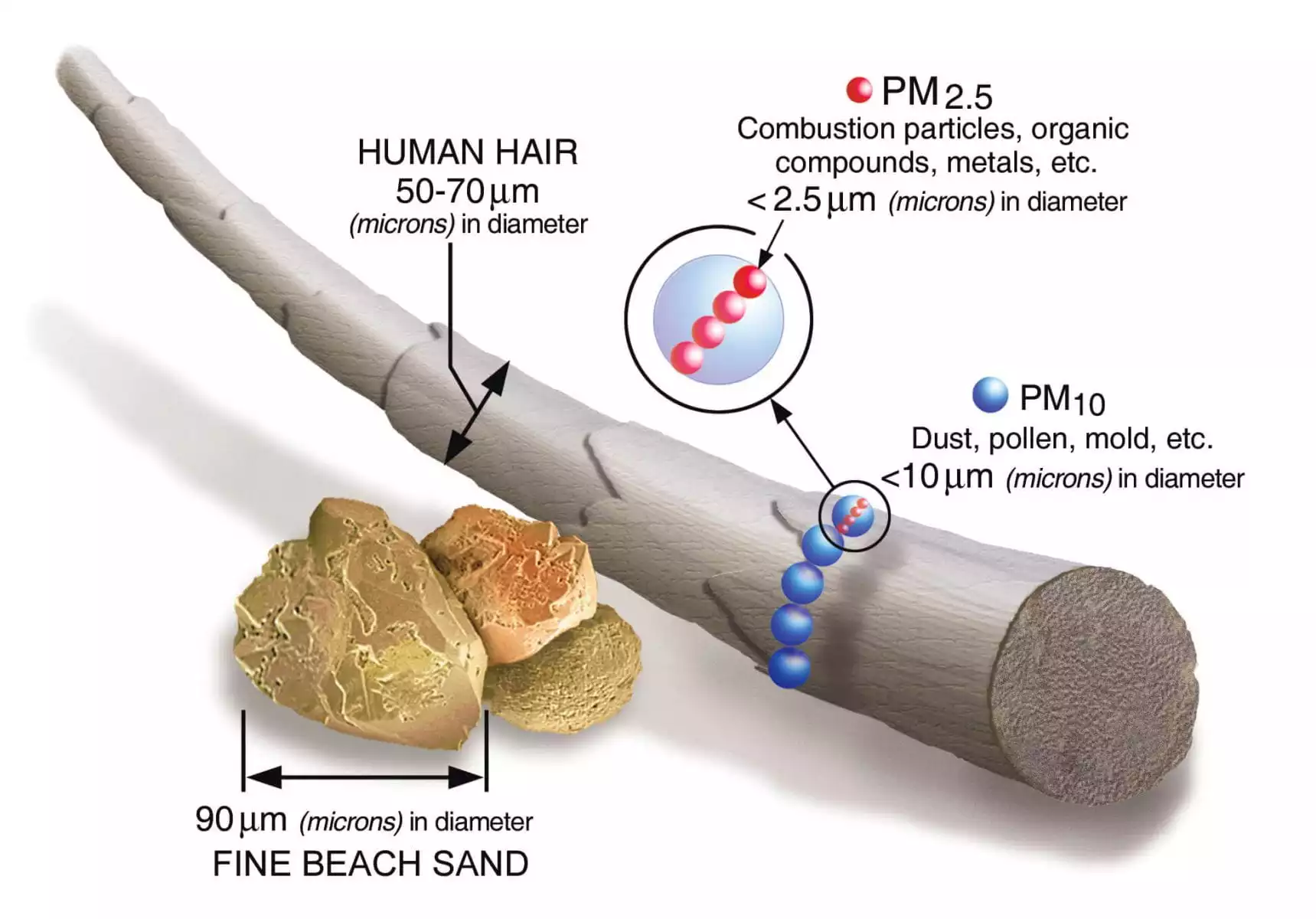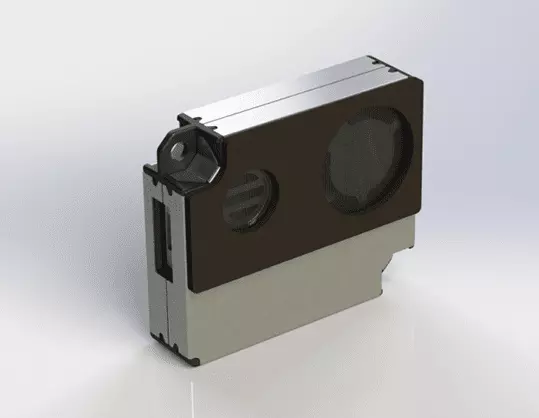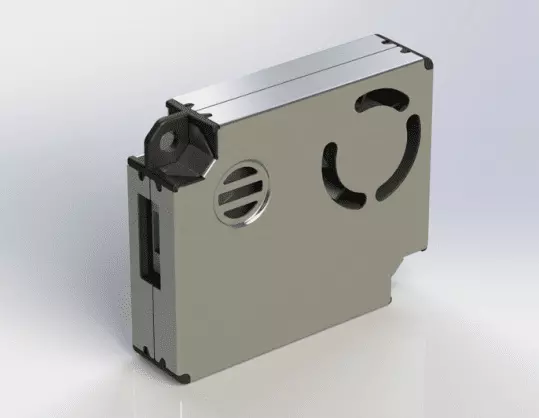1. Properties of PM2.5 & PM10
PM2.5 refers to particulate matter smaller than 2.5 micrometers in the air, also known as fine particulate matter and particulate matter which can go directly to the alveoli of the lungs. PM2.5 has a small particle size and strong activity, and is easy to carry toxic and harmful substances. It can stay in the atmosphere for a long time, which has a great impact on human health.
PM10, a kind of inhalable particulate matter with particle size below 10 microns, refers to the solid and liquid particles floating in the air, mainly including various kinds of dust, pollen, industrial dust and volcanic ash. Among all sorts of particles, pollen is an important testing object of PM10 sensors. Once entering the human respiratory tract, it can cause an itchy nose, running nose, sneezing, and even induce bronchitis and asthma. Thus, for patients with pollen allergies, knowing the actual situation of pollen concentration in the air in different areas and seasons is important to the diagnosis and prevention of the allergy.

2. Detection Methods of PM2.5 & PM10
At present, PM2.5/PM10 detection products can be divided into the artificial weighing method, β-ray absorption method, tapered element oscillating microbalance (TEOM) method and light scattering principle method.
(1) Weighting method
Quantitative air is extracted by a sampler with cutting features, and PM2.5 & PM10 are intercepted on the filter film of known mass. According to the weight and volume difference before and after the filter film sampling, the concentration of PM2.5 and PM10 can be calculated.
(2) TEOM method
An oscillating hollow tapered tube is used in the mass sensor and a replaceable filter film is installed on the tube. When sampled air passes through the film, particulate matter is deposited and the oscillation frequency changes. The mass of particles on the filter film can be calculated according to the frequency variation, and then the mass concentration of particles can be calculated based on the sampling flow rate and the site environment.
(3) β-ray absorption method
The added particle mass during sampling is measured by β ray attenuation. Air is sucked into the sampling tube by the pump and discharged through filter film, with the particles precipitating on the sampling film. And the β-ray energy decays when it passes through the film deposited with the particles so that the concentration of particles is calculated by measuring the attenuation.
(4) Laser scattering method
Sensors contain lasers and photoelectric receivers. The light scattering principle is that the laser scatters light on the particulate matter, with the light being converted into electrical signals through the photoelectric converter. At the same time, the particle size identification algorithm and the mass concentration conversion algorithm are used to obtain the high-precision particle count value and the mass concentration of the air particulate matter.
3. Applications of PM2.5 & PM10 Sensors
(1) Dust monitoring equipment
As the core component of monitoring equipment, dust sensors are widely used in the integration of dust monitoring instrument products, such as dust online monitoring systems, coal mine dust monitors and micro air quality monitoring systems. Dust sensors are precise instruments for determining air quality standards. Their precision, stability, service life and quality performance are all important parts of the quality assurance of the whole testing instrument.
Chengdu Pulse Optics-tech Co., Ltd. focuses on the research and development of air quality sensors. The measurement accuracy of all kinds of sensors has reached the top level of the industry. They are characterized by easy installation and maintenance, all-around shielding and anti-jamming technology, specific laser anti-attenuation function, etc, and also greatly reduce the post-sale cost for testing products, being the guarantee of the quality of products.
(2) Indoor household appliances
With dust sensors, air purifiers can quickly perceive the change of indoor air quality, give feedback to users and change the gear, undoubtedly realizing effective cleaning, energy saving and lifespan prolonging. As a long-term supplier to major air cleaning companies, Chengdu Pulse Optics-tech Co., Ltd. adheres to a high degree of technology and efficiency in product control, accuracy testing and research and development strength to create unique value and solve the problems of customers and society.
The PS5308 series laser particulate matter PM2.5 sensors of Chengdu Pulse Optics-tech have high detection accuracy, fast response and good consistency, and have been widely used in the detection of air quality (AQI) in various scenes. The brand-new dust sensors, which can detect both PM2.5 and PM10, have come out in the third quarter of 2021 to cater to the new market demand.


PM2.5 refers to particulate matter smaller than 2.5 micrometers in the air, also known as fine particulate matter and particulate matter which can go directly to the alveoli of the lungs. PM2.5 has a small particle size and strong activity, and is easy to carry toxic and harmful substances. It can stay in the atmosphere for a long time, which has a great impact on human health.
PM10, a kind of inhalable particulate matter with particle size below 10 microns, refers to the solid and liquid particles floating in the air, mainly including various kinds of dust, pollen, industrial dust and volcanic ash. Among all sorts of particles, pollen is an important testing object of PM10 sensors. Once entering the human respiratory tract, it can cause an itchy nose, running nose, sneezing, and even induce bronchitis and asthma. Thus, for patients with pollen allergies, knowing the actual situation of pollen concentration in the air in different areas and seasons is important to the diagnosis and prevention of the allergy.

2. Detection Methods of PM2.5 & PM10
At present, PM2.5/PM10 detection products can be divided into the artificial weighing method, β-ray absorption method, tapered element oscillating microbalance (TEOM) method and light scattering principle method.
(1) Weighting method
Quantitative air is extracted by a sampler with cutting features, and PM2.5 & PM10 are intercepted on the filter film of known mass. According to the weight and volume difference before and after the filter film sampling, the concentration of PM2.5 and PM10 can be calculated.
(2) TEOM method
An oscillating hollow tapered tube is used in the mass sensor and a replaceable filter film is installed on the tube. When sampled air passes through the film, particulate matter is deposited and the oscillation frequency changes. The mass of particles on the filter film can be calculated according to the frequency variation, and then the mass concentration of particles can be calculated based on the sampling flow rate and the site environment.
(3) β-ray absorption method
The added particle mass during sampling is measured by β ray attenuation. Air is sucked into the sampling tube by the pump and discharged through filter film, with the particles precipitating on the sampling film. And the β-ray energy decays when it passes through the film deposited with the particles so that the concentration of particles is calculated by measuring the attenuation.
(4) Laser scattering method
Sensors contain lasers and photoelectric receivers. The light scattering principle is that the laser scatters light on the particulate matter, with the light being converted into electrical signals through the photoelectric converter. At the same time, the particle size identification algorithm and the mass concentration conversion algorithm are used to obtain the high-precision particle count value and the mass concentration of the air particulate matter.
3. Applications of PM2.5 & PM10 Sensors
(1) Dust monitoring equipment
As the core component of monitoring equipment, dust sensors are widely used in the integration of dust monitoring instrument products, such as dust online monitoring systems, coal mine dust monitors and micro air quality monitoring systems. Dust sensors are precise instruments for determining air quality standards. Their precision, stability, service life and quality performance are all important parts of the quality assurance of the whole testing instrument.
Chengdu Pulse Optics-tech Co., Ltd. focuses on the research and development of air quality sensors. The measurement accuracy of all kinds of sensors has reached the top level of the industry. They are characterized by easy installation and maintenance, all-around shielding and anti-jamming technology, specific laser anti-attenuation function, etc, and also greatly reduce the post-sale cost for testing products, being the guarantee of the quality of products.
(2) Indoor household appliances
With dust sensors, air purifiers can quickly perceive the change of indoor air quality, give feedback to users and change the gear, undoubtedly realizing effective cleaning, energy saving and lifespan prolonging. As a long-term supplier to major air cleaning companies, Chengdu Pulse Optics-tech Co., Ltd. adheres to a high degree of technology and efficiency in product control, accuracy testing and research and development strength to create unique value and solve the problems of customers and society.
The PS5308 series laser particulate matter PM2.5 sensors of Chengdu Pulse Optics-tech have high detection accuracy, fast response and good consistency, and have been widely used in the detection of air quality (AQI) in various scenes. The brand-new dust sensors, which can detect both PM2.5 and PM10, have come out in the third quarter of 2021 to cater to the new market demand.


Previous: How Important Are Air Quality Sensors to Air Purifiers?
Next: Laser Dust Sensors vs. Infrared Dust Sensors




